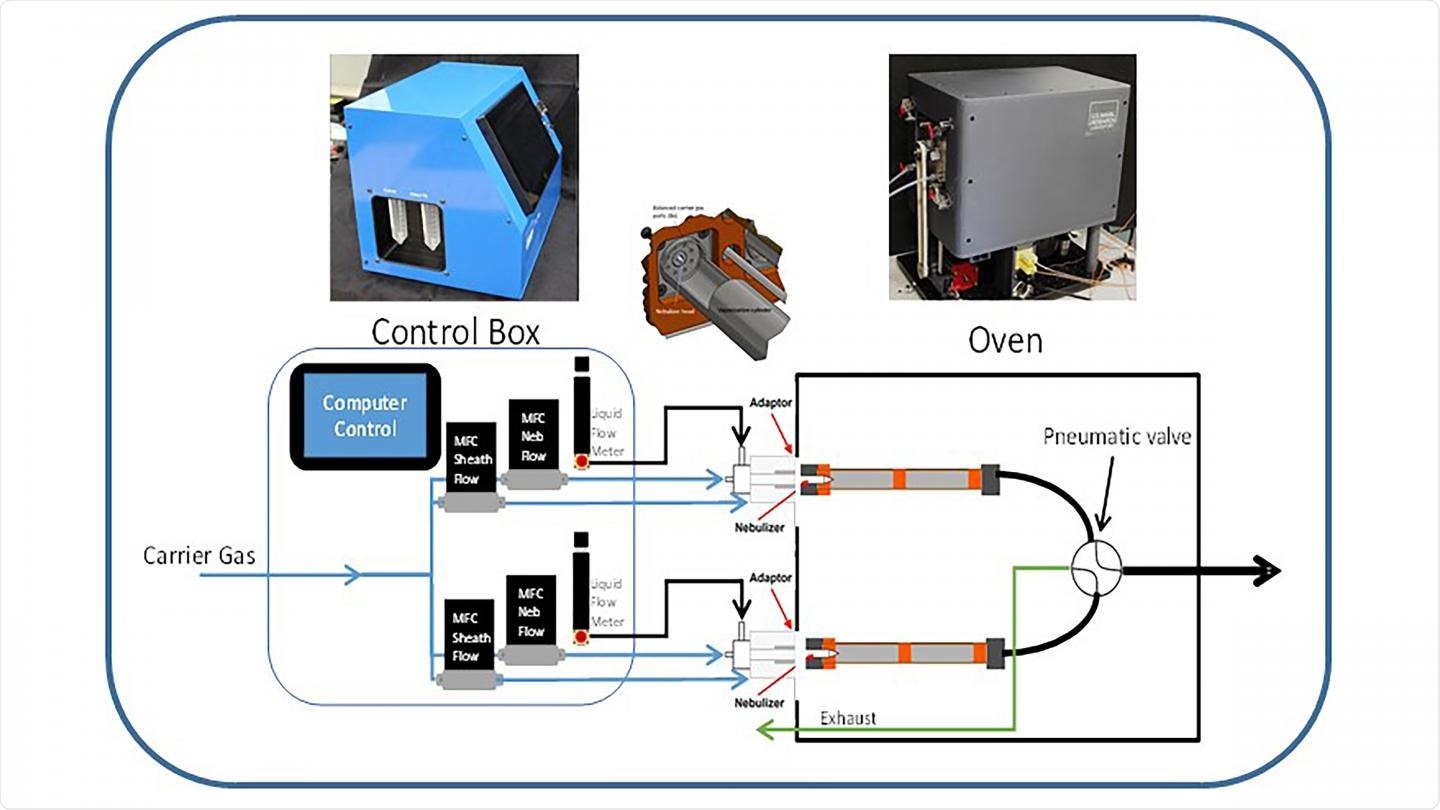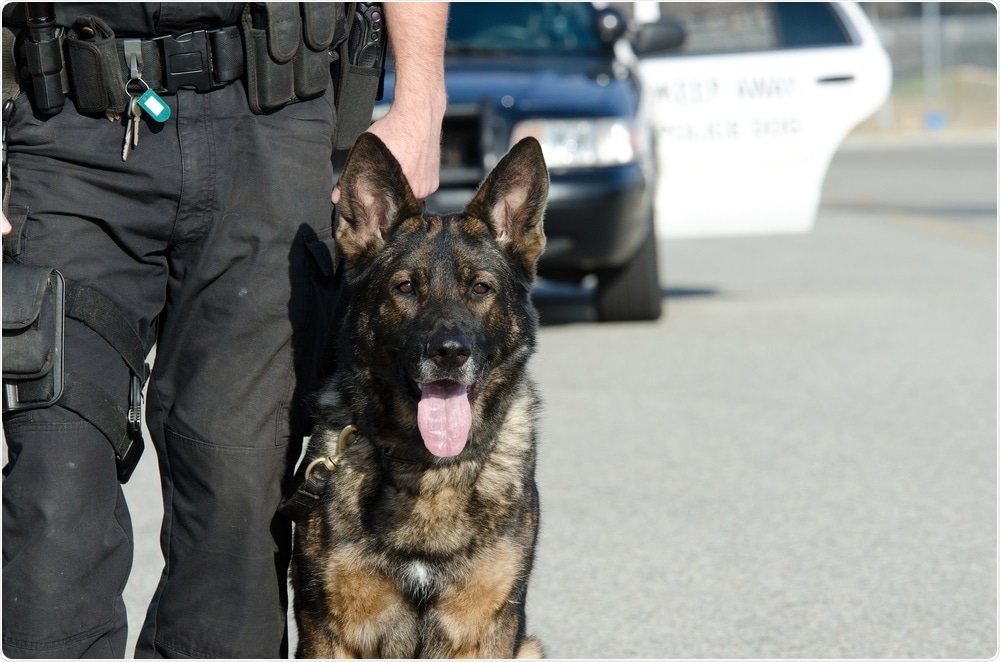Dr. Braden Giordano from the U.S. Naval Research Laboratory speaks to AZoLifeSciences about their new trace vapor generator that detects narcotics and explosives.
What provoked your research in the generation of explosives and illegal drugs?
Approximately ten years ago, we were tasked with the development of the Trace Explosives Sensor Testbed or TESTbed by the Department of Homeland Security, Science & Technology Directorate (DHS S&T). As envisioned, the TESTbed would provide validated vapor streams of trace vapors to assist in the development or validation of trace explosive vapor detectors. That work included efforts focused on trace vapor generation, validation, and development of numerous tools to assist in the testing of trace detection technologies.
The original TESTbed was very large, requiring an evaluation to occur at NRL. While that has its obvious benefits, DHS requested that a smaller footprint generator be developed that could be delivered to end-users for device evaluation and that our library of vapors is expanded beyond explosives into narcotics. Thus, the TV-Gen was designed, fabricated, and evaluated at NRL.
Why are trace vapor generation technologies crucial in determining the detection of explosives and illegal drugs?
Trace generation technologies are critical because they allow us the ability to understand and evaluate technologies more completely.
With validated vapor streams, critical performance metrics such as instrument and assay limits of detection, the effects of humidity, and potential sources of false positives and negatives can be determined in controlled laboratory experiments, before field evaluations, which can add several variables beyond the control of the evaluator.
How does trace vapor generation work?
There are several mechanisms to generate trace vapors, including using bulk material in a permeation oven and the generation of vapors from liquid analytical standards. With explosives and narcotics, there are obvious safety concerns, so working with bulk is limited to laboratories with appropriate approvals and safety measures.
The end goal of any vapor generation technique is to provide a stable vapor, at a known concentration for as long as is necessary to complete the evaluation of a sensing technology or device.
What is meant by the term ‘non-contact’ sampling?
We are all familiar with airport security where our luggage may be swiped and analyzed at the security checkpoint – that is an example of contact sampling. ‘Non-contact’ means that a source is being interrogated without physically touching the sample.
Vapor sampling, as we support through the development of the TV-Gen, is one type of non-contact sampling, and may be accomplished through a variety of instrumental methods, such as fluorescence detection or ion mobility spectrometry.
Can you describe how you developed the Trace Vapor Generator for Explosives and Narcotics (TV-Gen)?
The goal was to take all that we had learned in the development of the TESTbed system and provide the same or better performance in a much smaller footprint. While not small, the TV-Gen is much more compact relative to the TESTbed.
We achieved this primarily by reducing the size of the dual manifold system to encompass a single vapor delivery port instead of the six featured on the TESTbed. This, and several other design modifications, allows us to place the TV-Gen and associated control box on a small cart.

Image Credit: Trace vapor generator for Explosives and Narcotics (TV-Gen)
How accurate is this generator at detecting trace vapors of low vapor pressure compounds?
The generator does not actually detect trace vapors, it simply produces them. There are a number of metrics of interest used to evaluate the TV-Gen, with the two most important being the dynamic range of vapor concentration that can be generated and the stability of the vapor concentration as a function of time.
As it pertains to the dynamic range because the dual manifold is contained within an oven, the final vapor concentration can exceed the saturated vapor concentration of the target analyte at room temperature by several orders of magnitude (provided the analyte is soluble in water), and we have demonstrated limits of detection using an online mass spectrometer at as many as 5 orders-of-magnitude below saturated vapor concentration at room temperature – well into part per quadrillion (by volume) concentrations.
The stability of the vapor at a given concentration is made possible by the use of a pneumatic modulated liquid delivery system (PMLDS). With stable liquid flow, we are able to nebulize explosives and narcotics into the dual manifold and quickly vaporize the water mixture, producing analyte vapor in humid air for technology evaluation. Using this system, we achieve vapor concentration stability between 1-10%.
What advantages does this generator have over other trace vapor technologies?
There are a number of advantages. First and foremost, the user does not have to use bulk material. Readily available analytical standards can be used to make aqueous solutions for vapor generation. The wide dynamic range for final vapor concentration is also an advantage.
The long-term stability is a huge benefit – a 50 mL vial of solution used to generate a trace vapor can provide as much as 20 hours of stable vapor before generation conditions must be revisited. In addition, since we have the stainless steel manifold surface treated to minimize analyte adsorption and maintain the dual manifold in an oven, we have the ability to generate and transport vapors out of the TV-Gen very efficiently, which minimizes waste and reduces the time required to transition from one target analyte to another.
You are also looking to test out this technology using canines. Can you describe how you will carry out this testing?
One interesting application of the TV-Gen is for canine detection testing. We have recently modified the outlet of the TV-Gen to fit a dog muzzle and, in collaboration with Auburn University Canine Performance Sciences, will be evaluating the canine olfactory limit of detection.

Image Credit: John Roman Images/Shutterstock.com
What are the next steps in your research?
We continue to focus on increasing the library of analyte vapors that can be generated by the TV-Gen. In many cases, this involves developing new analytical methods of trace vapor validation.
We have parallel efforts focused on trace analyte preconcentration, separation, and detection that leverages the capabilities of the TV-Gen.
Where can readers find more information?
AIP Review of Scientific Instruments TV-Gen article link: https://doi.org/10.1063/1.5142385
About Dr. Braden Giordano
Dr. Giordano is the acting head of the Bio/Analytical Chemistry Section in the Chemistry Division at the U.S. Naval Research Laboratory.
His research focuses on the development of trace vapor generation and detection technologies.